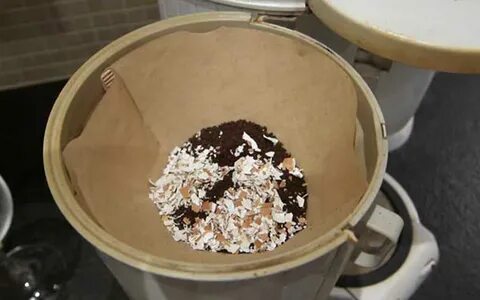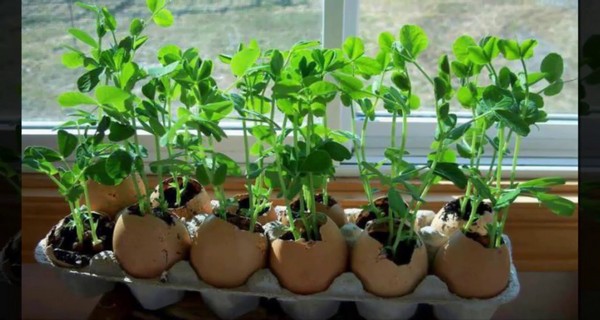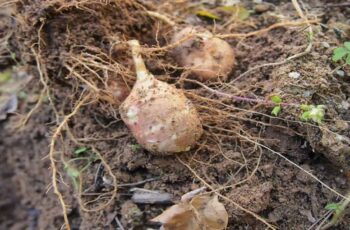Ad Blocker Detected
Our website is made possible by displaying online advertisements to our visitors. Please consider supporting us by disabling your ad blocker.
Do you have eggs? If so, you also have eggshells, which can be a valuable and cost-free resource for gardening as a natural material.

15 Fantastic Ways to Use Eggshells in the Garden
In the garden, there are various ways to make good use of eggshells. Some examples are:
- Start seedlings
- Improve container drainage
- Supplement bird feed
- Clean tools and supplies
- Improve soil aeration
- Prevent blossom end rot
- Build compost
- Balance vermiculture
- Fertilize plants
- Make a foliar spray
- Increase soil pH
- Control pests
- Deter cats
- Repel deer
- Relieve skin irritations
Let’s examine the reasons and methods for utilizing eggshells in gardening.
Why Use Eggshells in the Garden?
How To Prepare Eggshells for Garden Uses

Collecting a substantial amount of eggshells is necessary for gardening purposes, but it is a straightforward process to save and prepare them.
After cooking or baking with eggs, save the eggshells. To ensure their cleanliness, it is advisable to clean them immediately, especially if you plan to store them in your kitchen for a while. Cleaning the eggshells involves giving them a quick rinse, allowing them to air dry on newspaper, and then storing them in a container until you have enough to use. If you possess a large number of eggshells and want to expedite their usage, you can dry them in a low-heat oven, cool them, and store them.
Most of the time, crushed eggshells are used in gardening, so it’s a good idea to crush the shells and keep adding them to your container or bowl to save space.
The size to which you crush the shells will depend on their intended use. Some uses require larger half-shell pieces, while others require smaller, finer pieces. The uses outlined in this guide will provide guidance on the appropriate size for each purpose.
Crushing eggshells is a simple task that can be accomplished using your hands, a rolling pin placed inside a plastic zipper bag with the eggshells, a mortar, and pestle, a kitchen hammer (such as a meat tenderizing hammer), or any other item that can get the job done.
For very small crushed shells and to make crushed eggshell powder, the best tool for the job is a kitchen blender. Some people use a food processor instead. There’s no need to purchase fancy equipment for this task—use whatever works for you!
Start Seeds in Eggshells

Eggshells are a fantastic, biodegradable option for starting seeds in your garden. They’re free and can be planted directly in the ground or transferred to larger pots. To use eggshells as seed starters, collect both the shells and the egg carton.
Choose the largest shell portions you have and create a drainage hole in the bottom using an ice pick, nail, or awl. Fill each shell with a quality potting medium and plant one or two seeds per shell, at the depth specified on the seed packet. Place the potted shells into the egg carton.
One drawback of using eggshells as seed starters is their small size. You may need to pot up your seedlings at a later date to ensure they have enough room to grow. Potting up has many benefits, including good root growth and the ability to correct early issues like legginess. Once your seedlings are two times as high and wide as the eggshell, they should be potted up or planted in the ground.
Seed starting in eggshells is an excellent option for plants that don’t like having their roots disturbed during transplanting. These include fast-growing vining plants like pumpkins, squashes, sunflowers, and morning glories. They don’t need a long starting period ahead of planting outside and won’t stay in their pots for an extended period. Eggshell planting is a good choice for these types of plants.
To plant your seedlings, crack the eggshell to allow roots to expand and grow. Squeeze the shell to crack it completely and give the roots an outlet, then plant the entire shell and root ball directly into your next pot, garden container, or ground. This method can help reduce transplant shock caused by root disturbances and make the process easier for you.
Use Eggshells to Improve Container Drainage
Proper drainage is crucial for container gardens and potted plants. Eggshells are an excellent solution for improving drainage and promoting airflow to the roots, which is essential for nutrient uptake.
Crush your eggshells into large, coarse pieces and use them to line the bottom of your pot or container. Aim for a depth of about an inch, but adjust based on the size of your container. Larger containers will benefit from two to three inches or more of drainage material, while smaller pots may only need a quarter- to a half-inch. Use your judgment to ensure good flow for excess moisture and a reservoir for water in pots without drainage holes.
Eggshells are ideal for drainage because they are lightweight and bulky. When they break down, they also provide essential minerals back into the soil. Use fresh eggshells in your gardening containers each year and replace them any time you repot your plants. This will ensure optimal drainage and nutrient uptake for your plants.
Supplement Bird Feed with Eggshells
Cleaned and crushed eggshells are an excellent source of feed supplements for all types of birds, including backyard chickens. Contrary to popular belief, feeding chickens eggshells does not make them eat their own eggs. Calcium deficiency is what makes birds eat their eggs, and crushed eggshells do not look like eggs to chickens. Crushed eggshells provide critical calcium and other essential trace minerals to birds.
In the spring, female birds require more calcium for egg-laying, making it an ideal time to feed them prepared eggshells. This also coincides with birds migrating back and selecting nesting sites, giving you an opportunity to attract more bug-eating birds to your garden. This helps maintain a balance between harmful and beneficial insects and wildlife.
Before feeding eggshells to birds, they must be sterilized. You can easily do this by drying your eggshells in a 225-250F oven for 15 minutes. Once cooled, crush the eggshells into small pieces, around one-eighth of an inch in size.
To feed birds, you can mix the crushed eggshells into their seed mix or scatter them over the surface of the garden for birds to forage. This provides them with the necessary nutrients and promotes a healthy garden ecosystem.
Use Eggshells to Clean Up Garden Tools and Supplies
Eggshells, when crushed, possess mild abrasive properties that make them ideal for removing mineral deposits, hardened dirt, and grime from various surfaces. They can be used to clean planting containers, garden tools, birdbaths, potting surfaces, and any surface that can withstand a bit of abrasion.
Here are two excellent recipes for using crushed eggshells to clean in and around the garden or potting shed.
Simple Soap and Shell Cleaner
For any tough scrubbing task, mix clean, finely crushed eggshells into a dish of warm soapy water. This solution can be used to clean a variety of surfaces. If you need to clean hard-to-reach bottles and containers, leave the eggshells a bit coarse, pour the mixture into the container, and shake it to clean thoroughly. This method helps to remove stubborn stains, including those in your gardening coffee-to-go cup!
Heavy-Duty Eggshell Garden Cleaner
Baking soda and vinegar are two commonly found kitchen staples that can be combined with eggshells to create a powerful, natural cleaning solution for your yard and garden.
To create this mixture, start by collecting a dozen eggshells and cleaning them thoroughly. Dry them in a 225F oven for 15 minutes or until they are completely dry. Once cooled, blend them into a fine powder using a kitchen blender or food processor.
Pour the powdered eggshells into a one-quart bowl or storage container with a lid, and add three cups of baking soda. Mix or shake the container until the ingredients are evenly combined.
To use, mix the powder with a small amount of water or vinegar, depending on the level of cleaning, stain breakdown, and shine you desire. Adjust the consistency of the paste to suit the task at hand.
The mixture can effectively scrub away mold, mildew, grime, and buildup, or leave it on surfaces for 20 to 30 minutes to break down tough dirt, oils, and stains. Rinse surfaces clean after using the paste.
This cleaning solution is safe for birds and wildlife, as well as for use on pots and containers for growing vegetables, fruit, herbs, and other food plants. However, it is important to avoid using the cleaner or rinsing it into areas where plants are growing as the baking soda and vinegar may kill plants and grasses if used in high concentrations.
To prevent any negative impact on your plants, ensure that the cleaning solution is thoroughly rinsed away from the surfaces you are cleaning and disposed of properly. Be cautious when using the solution around plants and avoid any direct contact. By following these precautions, you can safely and effectively use this natural cleaner without damaging your plants or the environment.
Eggshells to Improve Soil Aeration
One effective way to use eggshells in the garden is by mixing them into your garden or container soil. This can help improve soil airflow, especially in hard-packing soils. Even high-quality soils in container gardening may become compacted over time and with repeated watering. Therefore, incorporating eggshells can improve water flow and drainage through the soil.
Ensuring good airflow and oxygen delivery is crucial to maintaining root health and nutrient delivery to your plants. By incorporating eggshells, you can improve these factors and provide a beneficial environment for your plants to thrive.

